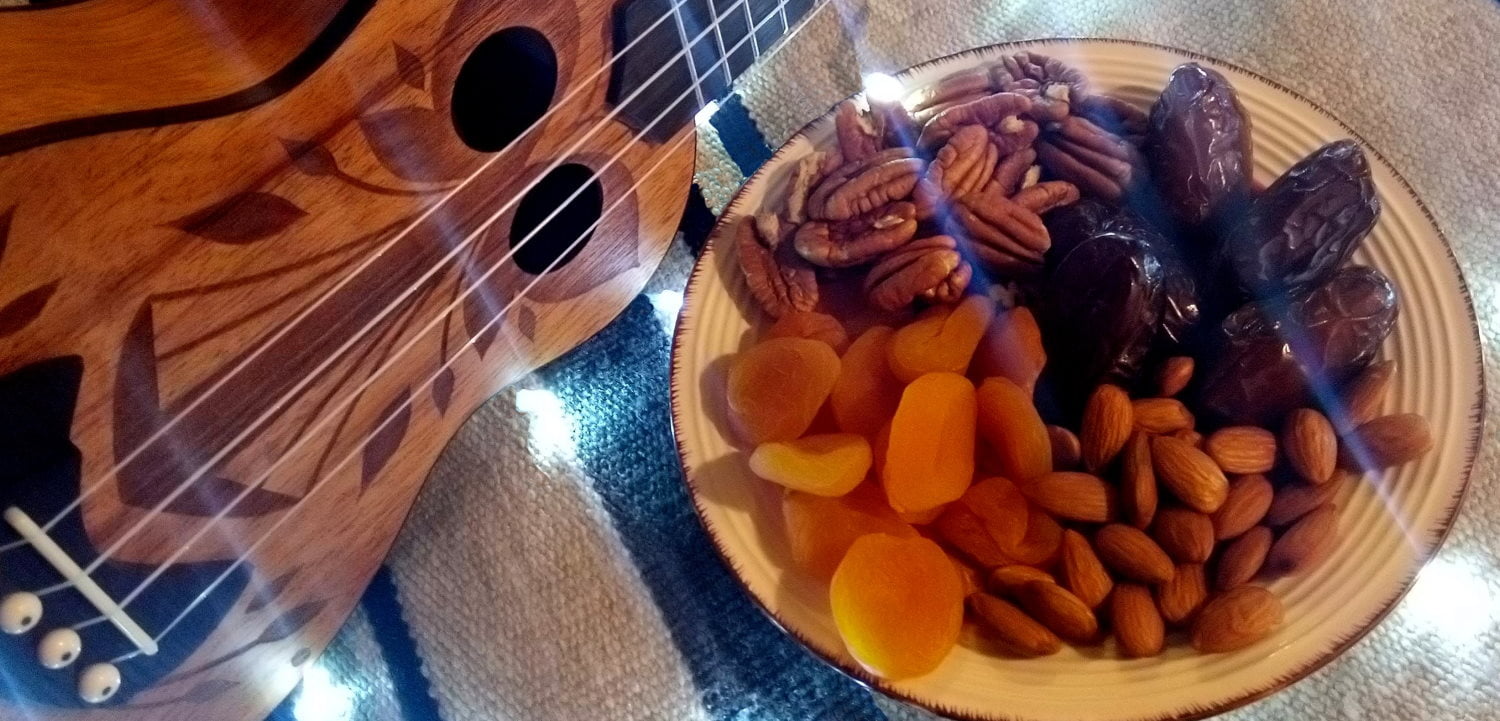When something has a moniker as romantic as Postre de Músico – ‘Musician’s dessert’, it doesn’t really matter what is in it, it can survive on the name itself.
In this case the dish is pretty fantastic as well as having a pretty name. Considering that they date from medieval times, both dish and name have survived well, and changed very little. Then again, I guess there really isn’t much to change.
Origins?
I don’t know exactly why this is called Musician’s dessert. The name and the origin are Catalan and I first ate it in Barcelona, seeing it on a menu as the last course of a menú del dia and not having any idea what it was. I’ve heard a few different possible explanations for the name, but I’m going to go with my favourite.
The name most likely alludes to the musicians of the cobal, the wind band that played at the banquets of the medieval era. ‘Els musics’ were commonly served with a bowl of fruit and nuts and a flagon of wine to keep up their strength.
Very sadly there are less travelling musicians plying their trade in taverns and at banquets and fiestas than there were back in the day, but the dish lives on. These days it is generally eaten as a snack in the afternoon or early evening, shared between friends over a bottle of wine and a chat, or served as desert at the end of a meal.
Postre de Músico should always be accompanied by a glass or two of sweet wine, both to satisfy tradition and to bring out the taste of the fruits and nuts properly. You can also whip out your guitar, flute or ukulele (which Rima is just learning to play), but that is entirely optional.
Compose your own
In the most traditional form this is super simple, literally just handfuls of dried fruits and nuts arranged on a plate, but we can do a little better than that.
My version is slightly more complex because it involves blanching and peeling some of the nuts, but it is worth it. The dried fruits that I have listed are just examples, and you can swap them out for others if you prefer.
Take a handful each of:
- Hazelnuts
- Almonds
- Walnuts
- Pine nuts
- Dried apricots
- Dried figs
- Raisins
- Dates
and then:
- Throw the hazelnuts into a small dry frying pan over a medium-high heat, and toast them for about 3 minutes until the skins begin to darken and go a bit wrinkly. Remove them from the heat and run off the skins with a clean, dry kitchen towel. Set them aside to cool.
- Blanch the almonds, and then in the same pan you used for the hazelnuts, toast them for about a minute, until they are golden brown. Pour them onto a plate and leave them to cool down.
- Toast the walnuts for about a minute until they are lightly coloured, and pour them onto yet another plate to cool.
- Toast the pine nuts in the same way, being careful not to burn them because they catch easily.
All that is left to do is to arrange the cooled nuts and the dried fruits in individual piles on a serving dish, or individual plates, and serve with moscatel, malvasia, or other desert wine.

